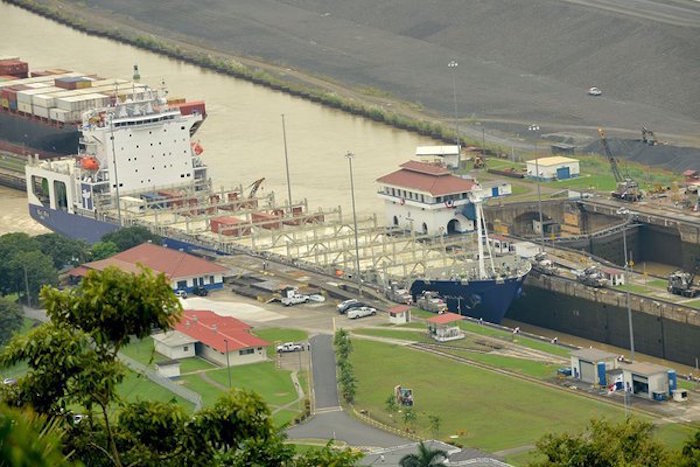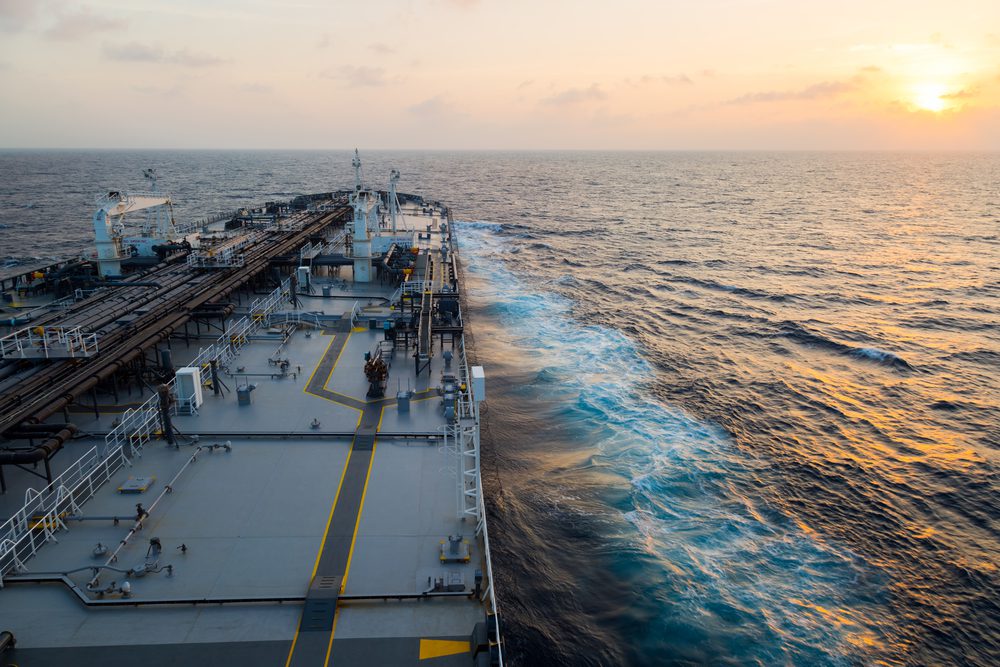MV Isla Bella passes through the Panama Canal. Photo: Panama Canal Authority
The TOTE Maritime LNG-powered newbuild MV Isla Bella arrived at its new homeport in Jacksonville, Florida late Monday night following a roughly two week trip from San Diego where the vessel was constructed.
On its journey, the Isla Bella reached speeds of more than 24 knots and passed through the Panama Canal.
The containership, the world’s first to be powered by clean burning liquified natural gas, was to replace the ill-fated El Faro upon its scheduled arrival this quarter.
The Isla Bella is the first of two ships in TOTE Maritime’s Marlin-class. The 3,100 TEU ships were constructed by General Dynamics NASSCO in San Diego and designed by DSEC, a subsidiary of Daewoo Shipbuilding & Marine Engineering (DSME) in South Korea. They are based on proven containership-design standards and include DSME’s patented LNG fuel-gas system and a single MAN ME-GI engine will primarily operate on LNG, making the vessels among the most environmentally friendly containerships in the world.
Isla Bella is expected to begin operating on the Jones Act Jacksonville to San Juan, Puerto Rico trade route – the same as the El Faro – under a charter agreement with the Tote Maritime subsidiary previously known as Sea Star Line LLC. Sea Star Line has since been rebranded to TOTE Maritime Puerto Rico.
The second Marlin-class vessel, Perla Del Caribe, is to enter service on the same route in Q1 2016.
As part of the National Transportation Safety Board’s investigation into the El Faro sinking, TOTE told investigators that the El Faro was scheduled to be removed from its route and redeployed to the U.S. West Coast where it would operate between Washington State and Alaska in place of TOTE Maritime’s Orca-class vessels as the two ships – MV North Star and MV Midnight Sun – begin their conversion to LNG fuel.
In order to prepare for this operational change, TOTE began in August to make modifications to the El Faro while underway. Work on these modifications was performed over many voyages, including during the final ill-fated voyage, the NTSB has said.
The wreckage of the SS El Faro was confirmed by the NTSB on Monday, located near its last known position northeast of Crooked Island, Bahamas at a depth of more than 15,000 feet. The ship had been missing since it sailed into the path of Hurricane Joaquin on October 1. All 33 crew members were lost in the incident.

 Join The Club
Join The Club











